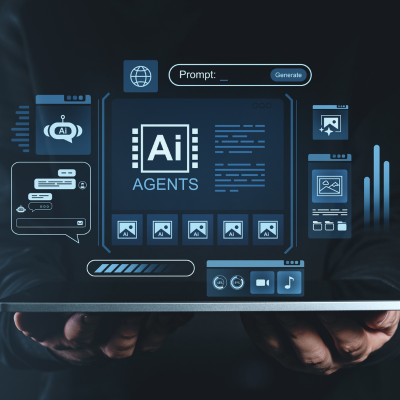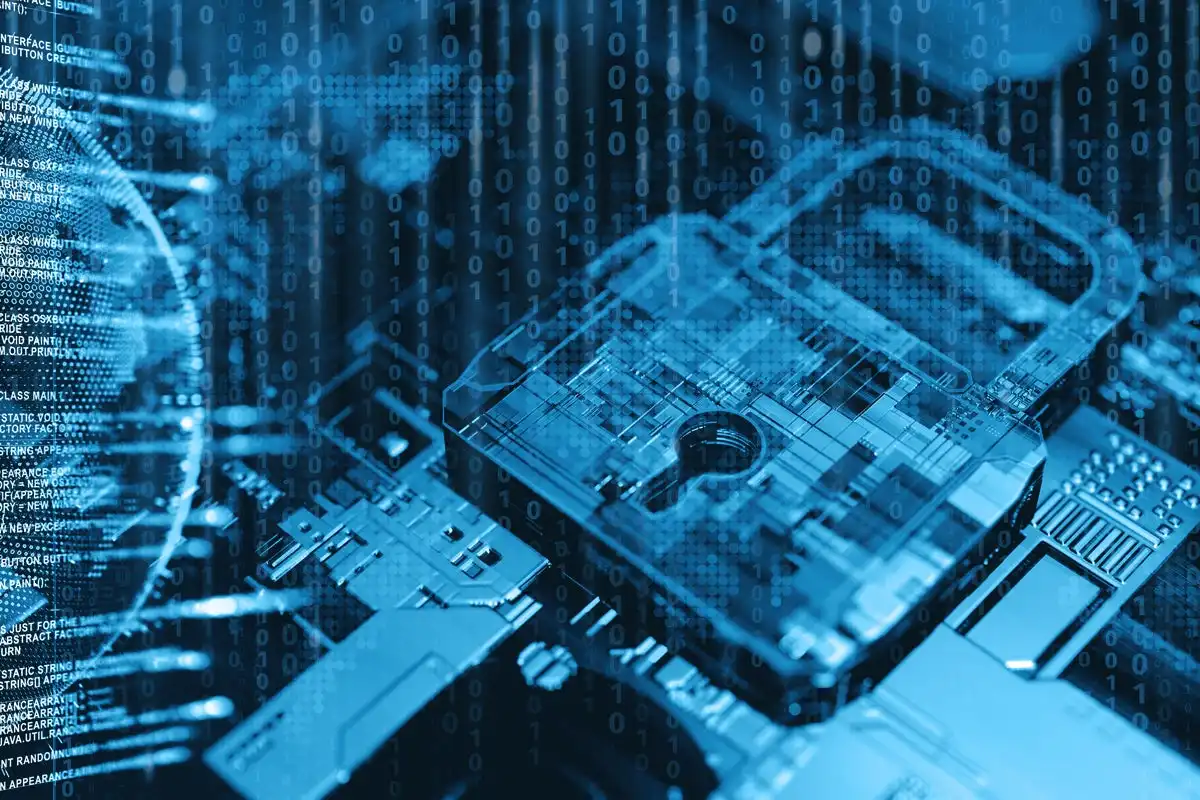Quantum-safe cryptography stands at the forefront of cybersecurity innovation, designed to protect sensitive data against the looming threat of quantum computers. While quantum computing promises breakthroughs in optimization, chemistry, and AI, it also poses an existential risk to the cryptographic foundations of the digital world. Widely used algorithms like RSA and elliptic curve cryptography, which secure everything from online banking to national secrets, could be rendered obsolete by quantum attacks.
Quantum-safe cryptography—also known as post-quantum or quantum-resistant cryptography—leverages novel mathematical constructs to ensure that encrypted data remains secure, even in the face of quantum adversaries. This article provides a comprehensive exploration of quantum-safe cryptography, from its mathematical roots to practical implementation strategies, and highlights how forward-thinking education—such as the Software Engineering, Agentic AI and Generative AI course at Amquest Education—prepares professionals to lead in this transformative field.
Background: Why Quantum-Safe Cryptography Matters Now
The Quantum Threat to Classical Cryptography
Public-key cryptography, the backbone of secure digital communication, relies on mathematical problems that are computationally infeasible for classical computers. Integer factorization (RSA) and discrete logarithms (ECC) have withstood decades of attacks, but Peter Shor’s 1994 algorithm showed that a sufficiently powerful quantum computer could solve these problems efficiently. Although Cryptographically Relevant Quantum Computers (CRQCs) do not yet exist, experts estimate they could emerge within a decade or two, making proactive defense essential.
The Urgency of Transition
The potential for “harvest now, decrypt later” attacks—where adversaries collect encrypted data today to decrypt it once quantum computers are available—adds urgency to the adoption of quantum-safe cryptography. Organizations handling sensitive, long-lived data (e.g., government, finance, healthcare) must act now to future-proof their systems.
The Technical Foundations of Quantum-Safe Cryptography
Major Families of Quantum-Resistant Algorithms
| Algorithm Family | Basis of Security | Use Cases | Key Considerations |
|---|---|---|---|
| Lattice-based | Hardness of lattice problems | Encryption, signatures | Efficient, large keys |
| Code-based | Error-correcting codes | Encryption | Large keys, mature theory |
| Hash-based | Security of hash functions | Signatures | Simple, stateless, large signatures |
| Multivariate | Solving multivariate equations | Signatures | Patented, less mature |
| Isogeny-based | Elliptic curve isogenies | Key exchange | Emerging, compact keys |
Lattice-based cryptography is among the most promising, with algorithms like Kyber (for encryption) and Dilithium (for signatures) already standardized by NIST. Their security is based on the hardness of problems in high-dimensional lattices, and they offer a balance of efficiency and provable security.
Code-based cryptography, exemplified by McEliece, relies on the difficulty of decoding random linear codes. While theoretically robust, practical deployments face challenges due to large key sizes.
Hash-based signatures are well-understood and quantum-resistant but are generally limited to signing operations, not encryption.
Multivariate cryptography, such as the Rainbow signature scheme, is based on solving systems of multivariate polynomial equations. While potentially quantum-resistant, these schemes have seen limited adoption due to patent issues and less mature security proofs.
Isogeny-based cryptography is a newer area, leveraging the mathematical structure of elliptic curve isogenies. It offers compact keys but is still under active research.
Symmetric Cryptography in the Quantum Era
While much attention focuses on public-key algorithms, symmetrical cryptography (e.g., AES) remains quantum-safe if key sizes are increased. Grover’s algorithm, which provides a quadratic speedup for searching, means that 128-bit keys should be upgraded to 256-bit for equivalent security. Symmetric algorithms are vital for bulk encryption and will remain a cornerstone of post-quantum security.
Implementing Quantum-Safe Cryptography: Strategies and Challenges
Hybrid Cryptography and Crypto-Agility
Transitioning to quantum-safe cryptography is not a simple algorithm swap. Most organizations rely on deeply embedded cryptographic protocols (TLS, VPNs, digital signatures) that are not easily replaced. A hybrid approach—running classical and quantum-resistant algorithms in parallel—enables a gradual, low-risk migration. This dual-stack model ensures backward compatibility while future-proofing communications.
Crypto-agility—the ability to rapidly update cryptographic algorithms—is essential in a landscape where standards and threats evolve quickly. Architecting systems for algorithm agility reduces technical debt and simplifies compliance with future mandates.
Performance and Integration
Quantum-safe algorithms often require larger keys and more computational resources, which can impact performance in latency-sensitive applications (e.g., real-time trading, IoT). Organizations must conduct thorough testing across their software, hardware, and network stacks to assess the operational impact. Cryptographic acceleration (specialized hardware or optimized software) may be necessary to maintain throughput.
Regulatory and Compliance Landscape
Governments and industry bodies worldwide are defining timelines and mandates for quantum-safe adoption. NIST’s standardization process is a critical reference, but regional differences exist. Staying abreast of regulatory developments and participating in industry working groups (e.g., ETSI’s Quantum-Safe Cryptography group) is vital for compliance and interoperability.
Advanced Tactics for Quantum-Safe Success
Risk-Based Data Prioritization
Not all data requires immediate migration. Organizations should prioritize protecting information that remains sensitive over long periods, such as intellectual property, personal identifiers, and classified communications. Data with shorter lifespans can be addressed later in the transition.
Incremental Migration and Testing
A phased rollout minimizes disruption. Start with non-critical systems, validate performance and security, and gradually extend quantum-safe protections to core infrastructure. Continuous monitoring and validation are essential to detect issues early.
Investment in Education and Talent
The shift to quantum-safe cryptography demands skilled professionals who understand both the theoretical foundations and practical deployment challenges. Specialized training—such as the Software Engineering, Agentic AI and Generative AI course at Amquest Education—equips learners with hands-on experience in cryptographic protocols, AI integration, and emerging quantum-safe algorithms. The course’s industry-aligned curriculum, expert faculty, and real-world project opportunities prepare graduates to lead secure, intelligent systems in the post-quantum era.
The Power of Community and Storytelling in Adoption
Education and awareness are critical drivers of quantum-safe adoption. Sharing real-world case studies, student success stories, and expert insights builds trust and accelerates organizational buy-in. Communities focused on quantum-safe cryptography—including open-source projects, academic consortia, and industry alliances—foster innovation and provide peer support.
Business Case Study: Quantum-Safe Cryptography in Finance
Organization: Global Tier-1 Bank
Challenge: Protect customer data and maintain compliance amid quantum threats
Solution: The bank deployed a hybrid cryptographic infrastructure, integrating lattice-based algorithms with existing classical methods. Partnering with quantum-safe solution providers, they conducted rigorous testing across cloud and on-premise environments.
Outcome: The migration achieved enhanced cryptographic resilience with zero downtime, compliance with emerging standards, and a measurable increase in customer trust metrics within one year.
Lessons Learned: Early adoption, cross-functional collaboration, and continuous validation are key to successful quantum-safe transitions in critical industries.
Actionable Guidance for Technology Leaders
- Inventory Cryptographic Assets: Identify all systems using vulnerable algorithms (RSA, ECC) and assess their criticality.
- Prioritize Long-Lived Data: Focus migration efforts on data that must remain confidential for decades.
- Adopt Hybrid Cryptography: Enable coexistence of classical and quantum-safe algorithms to ensure continuity.
- Build Crypto-Agile Systems: Design for easy algorithm updates to future-proof your architecture.
- Invest in Upskilling: Equip teams with deep technical knowledge through advanced education, such as the Software Engineering, Agentic AI and Generative AI course, which combines quantum-safe cryptography with cutting-edge AI competencies.
- Engage with the Ecosystem: Participate in standards bodies, open-source projects, and industry consortia to stay ahead of trends and threats.
Why Specialized Education Matters
The transition to quantum-safe cryptography is as much a human capital challenge as a technical one. Professionals need not only to understand the new algorithms but also to integrate them with modern software engineering practices and AI-driven systems. The Software Engineering, Agentic AI and Generative AI course at Amquest Education stands out for its rigorous, applied curriculum—featuring AI-powered modules, hands-on cryptographic labs, and industry mentorship. Graduates gain the skills to architect, deploy, and defend the next generation of secure, intelligent systems, positioning them at the forefront of the post-quantum era.
Conclusion: Future-Proofing Cybersecurity with Quantum-Safe Cryptography
Quantum-safe cryptography is no longer a theoretical concern but a strategic imperative for any organization handling sensitive data. By understanding the threat landscape, adopting hybrid and agile cryptographic strategies, and investing in specialized education, businesses can secure their digital future against quantum and classical threats alike. For professionals seeking to lead in this space, advanced training—such as the Software Engineering, Agentic AI and Generative AI course—delivers the expertise and practical experience needed to navigate the complexities of post-quantum security. The journey to quantum resilience starts today.
FAQs
Q1: What is quantum-safe cryptography and why is it important?
Quantum-safe cryptography refers to algorithms designed to resist attacks from both classical and quantum computers. It is critical because quantum computing threatens to break widely used encryption methods, risking the security of global digital infrastructure.
Q2: How does post-quantum security differ from traditional encryption?
Post-quantum security relies on mathematical problems believed to be hard even for quantum computers, unlike traditional cryptography, which is vulnerable to quantum algorithms like Shor’s.
Q3: What are the main types of quantum-resistant encryption algorithms?
The leading families are lattice-based, code-based, hash-based, multivariate, and isogeny-based cryptography. Each has unique strengths and trade-offs in security, performance, and deployment complexity.
Q4: How can organizations transition to quantum-safe cryptography?
Adopt hybrid cryptography, prioritize crypto-agility, follow NIST’s standardization roadmap, and invest in continuous education and testing.
Q5: What role does specialized education play in post-quantum readiness?
Advanced courses, such as the Software Engineering, Agentic AI and Generative AI program, provide the deep technical foundation and hands-on experience needed to implement and innovate in quantum-safe cryptography and AI-driven systems.
Q6: Is symmetric cryptography quantum-safe?
Yes, symmetric algorithms like AES are considered quantum-safe with sufficiently large key sizes, as they are not vulnerable to Shor’s algorithm but may require longer keys to maintain security against quantum search attacks.










